It Was Nice Connecting With You All!
Thanks to everyone that turned out for the PolarConnect Event yesterday, and thanks to all of the team members out here at Mulajokull that stayed up late with us for the event. We had a great turnout, wonderful satellite connection for the team's satellite phone, and best of all the questions from our viewers and listeners were excellent! Neal and I had a truly enjoyable time telling you all about our expedition, the research, and what life is like around camp. These kinds of opportunities for learners and scientists to connect live from the field are highly valuable for science education, and thanks to PolarTREC and the National Science Foundation, we were all able to enjoy one another's company and conversation about Dr. Iverson's and Dr. Hooyer's valuable scientific research; all while remaining thousands of miles away from each other!

An Academic Network Unfolds: How a Masters in Science Begins
Before the PolarConnect Event, the team enjoyed a 'day off' from data collection. Did we lounge around our tents sipping hot tea and playing cards all day instead? No...not quite. As enjoyable as that would have been for our minds and bodies, we still needed to make the most of the half-way decent weather. So, instead of heading back to the drumlin field armed and ready to continue digging new trenches and collecting samples, we grabbed a large map of the area, our cameras, crampons, and plenty of food and water, and hiked our way a few miles towards the east side of Mulajokull and its glacial forefield.

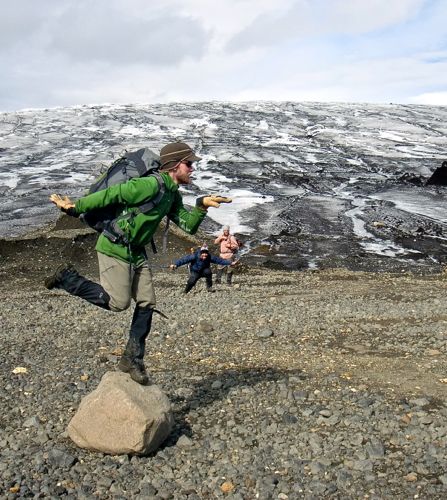
You see, Dr. Iverson and Dr. Hooyer have observed that Mulajokull's forefield is not only home to the unique drumlins in their active state of formation. It is also home to many other fascinating glacial landforms such as flutes and crevasse fills.

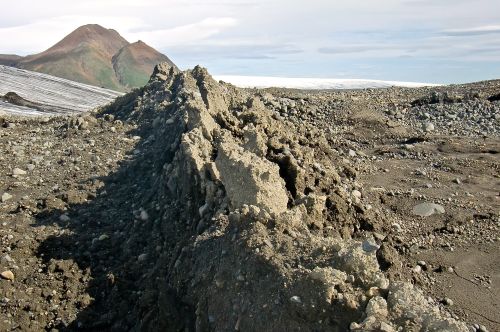
This is significant because Libby and Geoff are both going to begin their Master's degrees in glacial geomorphology (the study of how glaciers change the earth's landscapes) this fall, and they need to decide upon a topic for their studies and research.
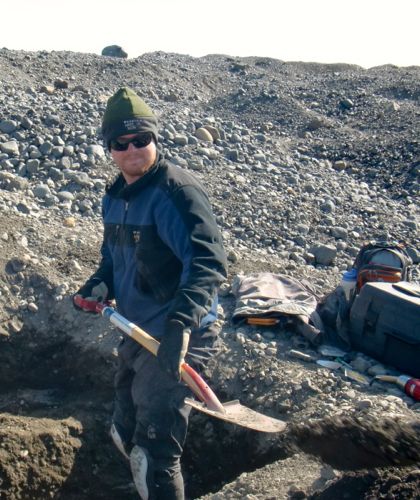
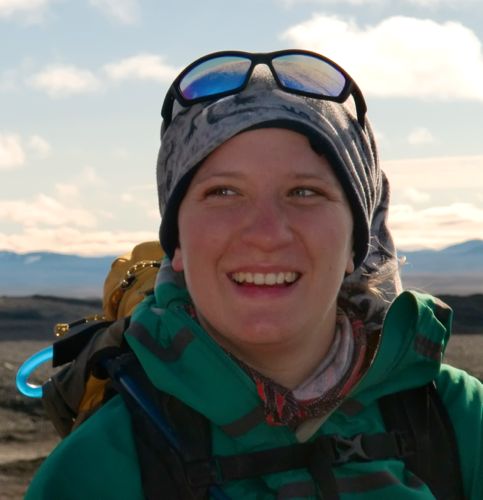
Students pursuing their Master's degree in a science related field must complete a substantial amount of research on a certain topic of their choice, create a focused research question regarding this topic, design a methodology for laboratory and field data collection to investigate this question, and finally synthesize this work (usually two years worth) into a well-developed thesis paper and presentation.
Dr. Iverson mentioned to me on our walk that what most commonly proves to be a the most difficult component of this work for Master's students is choosing an appropriate topic and creating a focused research question. Luckily for Libby and Geoff, the geologically fresh and intact glacial forefield of Mulajokull is literally littered with possibilities for more research.

Beginning on Saturday, Geoff and Libby will travel back to the east side of the forefield to begin exploring how AMS Fabrics and Pre-Consolidation Tests (the same measurement techniques we are using to study the drumlins) may be able to be used to investigate flutes and crevasse fills. For instance:
There is a former Master's student from Iowa State that has used AMS to investigate ancient Pleistocene moraines throughout Iowa. These moraines are thought to have formed originally as crevasse fills. Geoff has the opportunity to investigate the degree to which much younger crevasse fills (some less than a few years old) here at Mulajokull are related to the older Pleistocene crevasse fills found back home in Iowa.
There is a large amount of published literature surrounding flutes. However, these studies mostly cover macro-scale particle fabrics in the till. These kinds of measurements of the till require the observer to measure and record specific orientations of single till clasts within the landform, and are largely subjective measurements based on the observer's frame of reference. Libby has the opportunity to investigate the degree to which AMS Fabrics of flutes are related to previously measured particle fabrics of flutes.
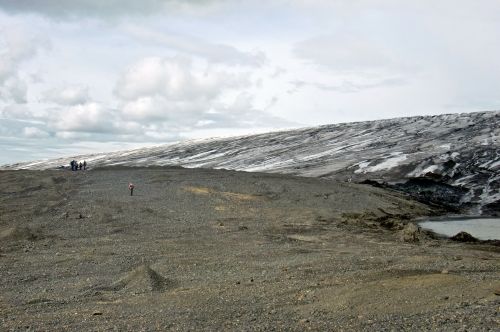
While both students will rely on published literature and research surrounding these landforms, there is a much higher quantity of published literature surrounding flutes than crevasse fills. This leaves Libby with more data to compare her field measurements to, and this leaves Geoff with a chance to collect very novel data. I am excited to watch their research projects unfold throughout the coming weeks and months.
The Ice of Iceland
After scouting some more potential research sites for Libby and Geoff, the team headed up onto the ice margin of Mulajokull to cut across to the west side of the forefield. The cameras came out and we enjoyed a trek across the glacier while simultaneously identifying future sites for more drumlin sampling later in the remaining days of the expedition. My daughter, Shantaya, asked us during the PolarConnect Event 'Where is all the Ice Daddy? I thought it was called Iceland?" Here ya go kiddo!


Before heading back to base camp using an old horse trail on top of Mulajokull's southern terminal moraine, Luke, James, and Reba continued west to try and find the hot spring that is near the Mulajokull forefield. They were successful! The entire team intends to head to the hot spring this weekend. I will be sure to post pictures of this glorious event once we get there!
Christmas in August
Well, I am currently sitting in the cook tent and Sandy is preparing an authentic Scandinavian Christmas meal. The smells are rich and warm and delicious. Hangijot is a smoked, preserved, lamb; similar to how ham is a smoked, preserved pork leg. This is traditional Christmas meat in Iceland and Sandy is preparing it as close to tradition as possible. Mmmmmmm....mmmmmm...mmmmmmmm! On that note, I need to go prepare myself for this taste bud-tantalizing feast.

Cheers!
Jamie


Comments